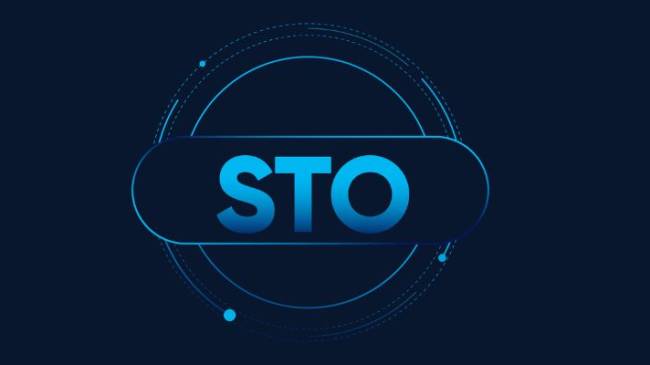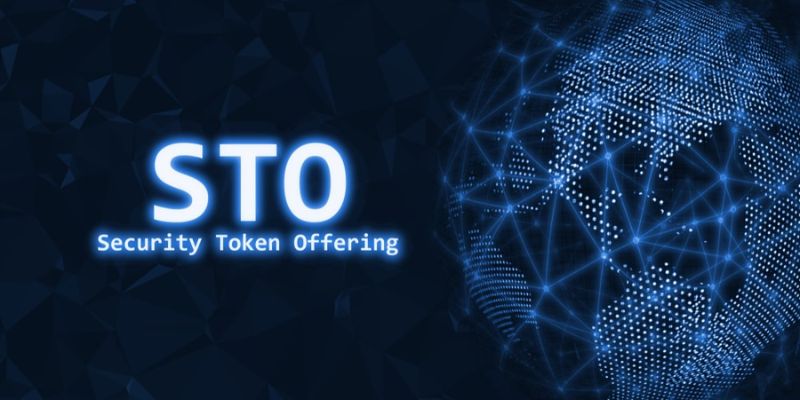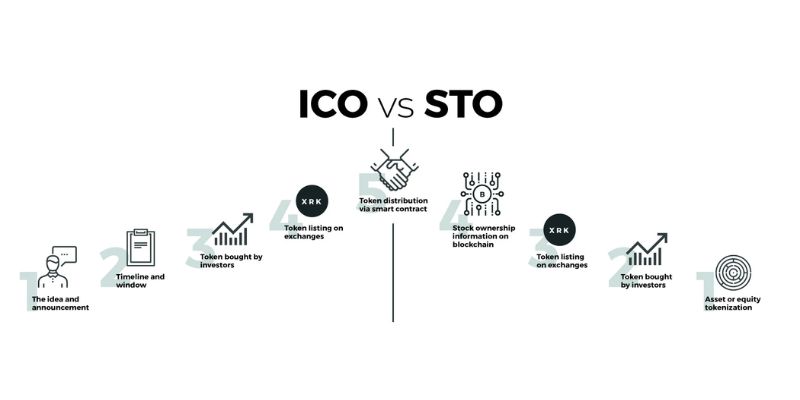In the past, a couple of years ago, Security Token Offerings (STOs) became a feasible option for investment, providing an alternative to both Initial Coin Offerings (ICOs) and Initial Exchange Offerings (IEOs). As the downward trend in the market began to indicate signs of reversing and conditions started to improve, an underground movement of STO initiatives appeared to be gaining momentum once again. The question arises, what precisely is an STO?
Table of Contents
- What is a security token offering (STO)?
- What is STO Token?
- The categories of STO Tokens
- The STO's characteristic
- The ingredients of the STO ecosystem
- How does STO work?
- Compare STOs and ICOs
- The difference between Security Tokens and Utility Tokens
- The potentials of STO
- Investment opportunity STO
- Future of STOs
What is a security token offering (STO)?
Security Token Offering (STO) is a fundraising method that involves the sale of tokens to investors. It shares similarities with Initial Coin Offerings (ICOs); however, there is a key difference between them. While ICOs do not offer any tangible assets, STOs involve the sale of security tokens that represent the underlying asset value of the issuer, such as stocks, bonds, funds, real estate, and more.
Essentially, STOs can be viewed as the digital equivalent of traditional Initial Public Offerings (IPOs). Those who hold the STO tokens can receive dividends and profits from any revenue-generating activities of the company or project. However, the beauty of STOs lies in their issuance on the blockchain platform, which enables the use of smart contracts and the benefits that come with it. Therefore, STOs have the potential to outperform ICOs and IPOs due to the advantages of blockchain technology.

What is STO Token?
Security Tokens refer to tokens that are issued through Security Token Offerings (STOs) and are typically issued on specialized platforms. The term "Security Token" is used to describe a token that meets the following criteria: firstly, the token must be a financial investment product. Secondly, investments must be made in the company or institution issuing the token. Thirdly, investors must expect to own the token in order to generate a profit, and finally, the expected returns are generated by a third party. These conditions are critical in defining a Security Token, which is essentially a digital representation of a traditional investment instrument.
The categories of STO Tokens
The different categories of STO Tokens can be broadly classified into three main types: Equity Tokens, Asset-Backed Tokens, and Debt Tokens. Equity Tokens are akin to IPOs in that they represent ownership shares in a company. However, one key difference is that Equity Tokens are recorded on the blockchain, whereas traditional stocks are typically printed on certificates or stored in a centralized database. This makes Equity Tokens more secure and transparent as ownership information can be easily verified by anyone on the blockchain.
Asset-Backed Tokens, on the other hand, represent ownership of tangible assets such as real estate or art. These tokens leverage blockchain technology to store records of the underlying assets in a secure and tamper-proof manner. Asset-Backed Tokens can also be treated as digital assets themselves, as they provide a secure transaction record and retain value. This can make them an attractive investment option for individuals looking to diversify their portfolios.
Debt Tokens, as the name suggests, act as short-term loans offered by investors to a company. The terms of this loan are recorded on the blockchain, which serves as a secure and transparent contract between the two parties. The price of a Debt Token will largely depend on the dividend model and the risk associated with the loan, making it a potentially lucrative investment for those willing to take on a higher level of risk.
In summary, the categories of STO Tokens include Equity Tokens, Asset-Backed Tokens, and Debt Tokens. Each type serves a unique purpose and offers distinct advantages to investors. With the use of blockchain technology, STO Tokens provide a secure and transparent way to invest in various types of assets and securities, making them an increasingly popular option in the world of finance.

The STO's characteristic
The STO, or Security Token Offering, stands in contrast to the ICO model in several ways. One significant disadvantage of the ICO model is that the tokens sold do not correspond to any tangible value, which can lead to a loss of value for ICO token holders who choose to sell. Additionally, ICOs are not subject to regulatory oversight or protection, which can leave investors vulnerable to fraud or other abuses.
In contrast, STOs offer several advantages over ICOs. By providing investors with tokens that represent real assets, such as equity in a company or a share of profits, STOs provide a more tangible value proposition. Furthermore, STOs are often subject to regulatory oversight, which can provide investors with greater protection and peace of mind. Ultimately, STOs offer a more secure and trustworthy investment model that benefits both investors and the platforms that issue them.
The advantages of STO
For investors
The advantages of Security Token Offerings (STOs) are numerous and significant, particularly for investors. One key benefit is a reduction in risk, as STOs help to eliminate fraudulent projects by enabling investors to detect scams through the roadmap and punish those responsible according to the law. Additionally, owning Security Tokens provides investors with increased position and status, since owning more Tokens means having more influence and power in the investment.
Another major advantage of STOs is that they offer opportunities for investors of all sizes, not just large institutions. Unlike traditional investment methods, STOs allow investors, whether large or small, to participate in projects and gain exposure to new opportunities. This democratization of investment opportunities is a major step forward in creating a more inclusive financial landscape.
Furthermore, STOs eliminate intermediary fees, such as those charged by brokers, banks, and legal parties, by issuing Tokens on the blockchain and using Smart Contracts. This lowers the operating costs for investors, making it easier and more affordable to invest in projects.
Moreover, STOs help to increase liquidity in the corporate market by bridging the gap between investors. The elimination of barriers to entry and the ability to invest in a wider range of projects will likely lead to more investors entering the market, which in turn should lead to greater liquidity.
Finally, STOs create a global market, which is not restricted by country or nationality. Unlike traditional equity investments, STOs allow anyone from anywhere in the world to participate, thereby promoting greater access to investment opportunities and creating a more inclusive global financial system.
For development platform
When it comes to development platforms, having access to a standard framework is crucial. It provides a solid foundation upon which a suitable Security Token Offering (STO) product can be built. Thanks to blockchain technology, Security Tokens offer several advantages over traditional stocks or bonds. One of the key benefits is that they can be easily programmed using a Smart Contract. This makes them a more optimal choice for investors looking for greater flexibility and efficiency in managing their investments.

Disadvantages of STOs
During the initial phases of development, Security Token Offerings (STOs) are bound to encounter mistakes and drawbacks. One of the major challenges that STOs face is the need for further clarification of the legal framework. Despite the fact that the tokens are protected by law, the legal framework governing STOs needs to be more precise and specific. Moreover, projects and products utilizing STOs are under enormous pressure to ensure that they avoid errors and comply with legal requirements, due to the high level of responsibility that comes with their use.
Another disadvantage of STOs is that Security Tokens are subject to numerous limitations. It is particularly difficult to use Security Tokens as Utility Tokens within a project's ecosystem, as the tokens must always be in compliance with relevant laws and regulations. Additionally, STOs are closely tied to the asset value of the business, which poses significant challenges for startups, especially those that have yet to generate a profit. As a result, these obstacles can make it difficult for startups to incorporate STOs into their business models.
The ingredients of the STO ecosystem
The STO ecosystem comprises several key components, namely the STO Platform, STO Projects, and STO Exchange. The STO Platform is a project designed specifically to facilitate the tokenization and issuance of Security Tokens, providing a platform for STO deployment. On the other hand, STO Projects are the projects that issue their own Security Tokens, utilizing the services of the STO Platform to do so. Finally, the STO Exchange refers to the exchanges that enable the trading of the aforementioned Security Tokens, completing the STO ecosystem.
How does STO work?
- Asset Tokenization: The first step in an STO is to identify the underlying asset that will be tokenized. This could be shares in a company, real estate, bonds, or other financial assets.
- Legal Compliance: Companies conducting STOs must comply with relevant securities regulations in the jurisdictions where they operate and where the tokens will be sold to investors. This involves conducting legal and regulatory assessments and working with legal advisors to ensure compliance.
- Smart Contract Development: Once the legal framework is established, smart contracts are created on a blockchain platform to represent the security tokens. These smart contracts define the rights and obligations of token holders, such as ownership rights, dividends, voting power, and other benefits.
- KYC and AML Checks: Before participating in an STO, investors are required to undergo Know Your Customer (KYC) and Anti-Money Laundering (AML) checks to verify their identities and ensure compliance with regulations.
- Investment Process: Investors who pass the KYC/AML checks can participate in the STO by purchasing security tokens using cryptocurrencies or fiat currencies. The investment process is typically conducted through a secure platform that facilitates the token sale.
- Token Distribution: Once the STO concludes, the security tokens are distributed to the investors' digital wallets based on the amount of investment made.
- Token Trading and Liquidity: After the STO, security tokens can be traded on compliant cryptocurrency exchanges or alternative trading platforms. These exchanges must adhere to securities regulations to provide a secure and regulated trading environment.
- Ongoing Compliance: Companies conducting STOs are required to adhere to ongoing reporting and compliance obligations to ensure transparency and investor protection. This includes providing regular updates to token holders and complying with relevant financial reporting requirements.
Overall, STO provides a regulated and compliant way for companies to raise capital by tokenizing traditional assets. They offer investors increased transparency, regulatory protections, and potential liquidity in the secondary market. However, it is essential to conduct thorough due diligence and ensure compliance with local securities laws before participating in an STO.
So sánh STO và ICO
|
WHAT |
ICO | |
|
Token |
Security Token |
Utility Token |
|
Token Price |
Depends on company |
Determined by the development team |
|
Legal Protection |
Yes |
Not protected by law |
|
Collateral |
It can be company assets, collateral, etc. |
None |
|
Evolution |
Strong upward trend |
Slow growth rate |
When comparing Security Token Offerings (STO) and Initial Coin Offerings (ICO) tokens, the most significant distinguishing factor is the supply. STOs are tied to the tangible value of the underlying company, which implies that their supply is limited. On the other hand, utility tokens linked to ICO projects do not provide clear information on this matter.
The number of tokens and their limited supply are heavily influenced by the design of the development team, which can be quite inconvenient. Therefore, the level of token supply and scarcity varies depending on the type of token offering. While Security Tokens have a limited supply, Utility Tokens can have an unlimited supply, which may negatively impact their overall value. Therefore, investors must thoroughly research the tokenomics of the offering to determine if the token supply aligns with their investment goals.

The Difference Between Security Tokens and Utility Tokens
Security Tokens are physical representations of assets with defined value that can be bought and sold. These tokens are considered subject to various legal and regulatory requirements, especially those related to securities.
On the other hand, Utility Tokens can be compared to gift cards or vouchers issued by the project owner. These tokens are designed for use within the project's ecosystem, primarily for purchasing products or services provided by the project owner at a later time.
The main difference between holders of Security Tokens and Utility Tokens lies in their respective levels of influence over the business. Security Token holders are typically granted a greater level of influence due to the fact that they are linked to tangible assets with intrinsic value. Conversely, Utility Token holders usually have less influence over the business, as their tokens are mainly intended for use within the project's ecosystem and do not represent ownership or equity in the underlying assets or business operations.
Potential of STO
Security Token Offerings (STO) are considered a viable option for businesses that have established their presence in the market and are generating profits. However, it may not be the most suitable choice for startups, which is a clear advantage that STO has over Initial Coin Offerings (ICO).
Despite this limitation, STO offers a compelling solution by leveraging the exceptional advantages of blockchain technology to transform the traditional market economy. By doing so, it enables the stock market to explore new opportunities and unlock its true potential. Additionally, STO continually strives to apply and enhance modern techniques, which can help it to make a significant impact on the global market.
Investment opportunity STO
The technology known as blockchain holds immense potential, with its innovative capabilities paving the way for numerous advancements. One of the areas that have been deeply intertwined with this technology is fundraising, where the introduction of Security Token Offerings (STOs) has emerged as a highly sophisticated means of raising capital. Due to this integration with blockchain technology, STOs offer a plethora of benefits and hold significant potential for future growth and development.
Invest in Security Tokens
When it comes to investing, it's important to take into account various criteria to make informed decisions that align with your financial goals. One investment option worth considering is security tokens, which are tied to the underlying value of a company. To ensure a smart investment, there are a few key factors that investors should consider.
Firstly, it's essential to evaluate the company's financial performance over time, including its earnings per share (EPS) and profits. Ideally, investors should look for companies with consistent growth in these areas.
Another important factor to consider is whether the company pays out dividends to its investors in full and on a regular basis. This can provide a steady stream of income and help offset any potential risks associated with the investment.
In addition to these financial metrics, investors should also take into account other factors that could impact the company's value, such as its supply and demand dynamics, the potential for growth, and its overall position within the market. By carefully considering these criteria, investors can make informed decisions when investing in security tokens.
Invest in STO issuance platforms
During the initial phases of a project, it is crucial to have Security Token Offerings (STOs) to facilitate the development of the platform. This presents a great opportunity for investors to back STO projects and companies. However, investors must exercise caution and select projects based on certain criteria such as the availability of legal guarantees, a reliable tokenization solution, and the existence of support programs such as promotions, advertising, and market selling of STOs to the community.
Additionally, it is essential to consider the level of support for trading Security Tokens in the market as well as the availability of tools to manage portfolios and projects for issuing STOs or investing in them. By carefully considering these factors, investors can make informed decisions and support projects that have the potential to yield good returns.
Future of STOs
The future of Security Token Offerings (STOs) holds great promise as the blockchain and cryptocurrency industries continue to evolve. While STOs are still relatively new and face regulatory challenges, they have the potential to transform traditional finance and the way assets are bought, sold, and traded. Here are some potential trends and possibilities for the future of STOs:
- Regulatory Clarity and Global Standards: One of the key factors influencing the growth of STOs is regulatory clarity. As governments around the world work to define and regulate security tokens, we may see the emergence of global standards that provide a clear framework for conducting STOs across jurisdictions.
- Tokenization of Traditional Assets: STOs enable the tokenization of various traditional assets, such as real estate, equity, venture capital funds, and debt instruments. This trend is expected to continue, allowing for greater fractional ownership and liquidity of otherwise illiquid assets.
- Enhanced Investor Protections: With regulatory compliance, STOs offer enhanced investor protections compared to many initial coin offerings (ICOs). Investors may benefit from increased transparency, clear rights, and improved access to information.
- Secondary Market Liquidity: As more security tokens are issued and traded on compliant exchanges, the secondary market for security tokens is expected to grow. This liquidity could attract more investors and facilitate the trading of tokenized assets.
- Real Estate Tokenization: Tokenization of real estate has gained significant traction. In the future, STOs may become a common method for financing real estate projects and providing investors with fractional ownership of properties.
- Fractional Ownership of High-Value Assets: STOs allow for fractional ownership of high-value assets, enabling smaller investors to participate in lucrative markets that were previously out of reach.
- Automated Compliance: Smart contracts can be programmed to enforce compliance with regulations and automatically handle dividend distributions, voting rights, and other token-related functions, reducing administrative burdens for issuers.
- Integration with DeFi: DeFi (Decentralized Finance) and STOs may converge, providing more sophisticated financial products and services backed by tokenized assets. This integration could lead to new investment opportunities and a seamless bridge between traditional and decentralized finance.
- Tokenization of Intellectual Property: Intellectual property, such as patents and copyrights, can be tokenized through STOs, allowing creators to monetize their intellectual assets and investors to share in potential rewards.
- Global Accessibility: STOs can democratize access to investment opportunities, allowing investors from around the world to participate in projects and markets that were traditionally limited to a select few.
- Compliance as a Service: The development of specialized companies providing 'compliance as a service' solutions may arise to help companies meet the legal requirements and reporting obligations related to STOs.
As blockchain technology and asset tokenization continue to evolve, STOs are likely to play a key role in the development of capital and financial markets. Although challenges remain, such as achieving widespread regulatory acceptance and educating investors about STOs, the potential benefits for both issuers and investors make them an exciting avenue for the future of finance.
Unicorn Ultra (U2U) is a blockchain platform ecosystem utilizing the Venture Builder model, encompassing various aspects of the industry. The project focuses on raising capital through STOs, a modern financial instrument that can bring significant benefits to investors. STOs are a secure and transparent fundraising mechanism involving the use of blockchain technology to facilitate the transaction process. U2U is committed to adhering to the core principles of STOs in its operational roadmap, including ensuring compliance with relevant regulations and providing comprehensive information to potential investors. Joining U2U's investment community will offer a unique opportunity to stay informed and updated on the latest developments, ensuring you don't miss any important news. Follow https://uniultra.xyz/ for more updates on cryptocurrency investments.






